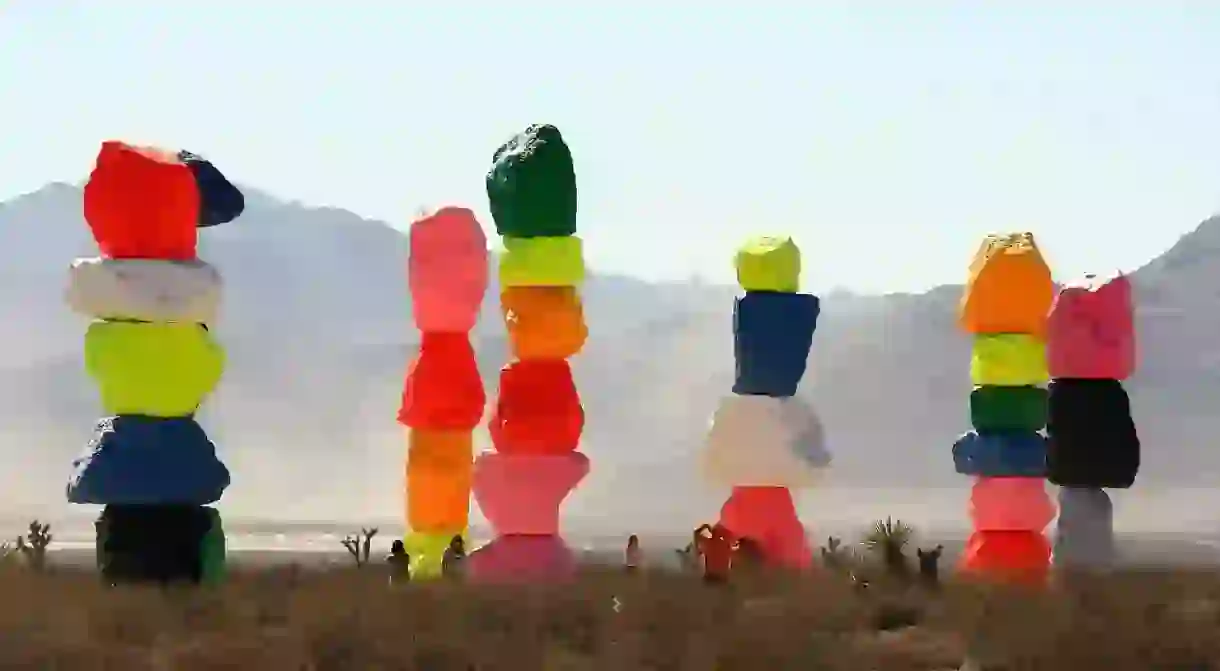Everything to Know About Nevada's Seven Magic Mountains

Part of the magic of art is surprise, running across what we didn’t expect, the juxtaposition of object and setting that challenge our perceptions. And it’s one of the most alluring aspects of Ugo Rondinone’s Seven Magic Mountains, an art installation outside Las Vegas.
A septet of towering, crayon-colored boulders in the midst of the desert, it’s somehow whimsical and spiritual at the same time.

Created by New York’s Art Production Fund and the Nevada Museum of Art, Reno, Seven Magic Mountains was four years and slightly over $3 million in the making. The work’s location half an hour outside of Las Vegas draws both locals and tourists outside of the city limits to appreciate not just art, but nature.

With its combination of rough stone and brilliant color, Seven Magic Mountains can be viewed as the missing link between the rock formations that created the Vegas Valley and the glowing, technicolor city that rose up within it. The bright towers bring a smile to visitors’ faces, but the trip and the time away from the nonstop overstimulation of Las Vegas also offers calm to the mind.

Seven Magic Mountains is one of the largest land-based art installations to be put up in decades. It’s tied to previous landscape art pieces through its location near the Jean Dry Lake Bed, where Jean Tinguely and Michael Heizer created sculptures. The Swiss-born Ugo Rondinone works in a variety of mediums, from acrylic on canvas to paper and wood with plexiglass, and his pieces range in scale from sculptures that would fit on a bookshelf to the 35-foot cairns of Seven Magic Mountains.

Rondinone’s Seven Magic Mountains was originally slated to be taken down in May 2018. However, the piece has proven to be exceptionally popular—getting about 1,000 visitors a day—and the Nevada Museum of Art has announced that it will remain on view at least through until the end of the year.













